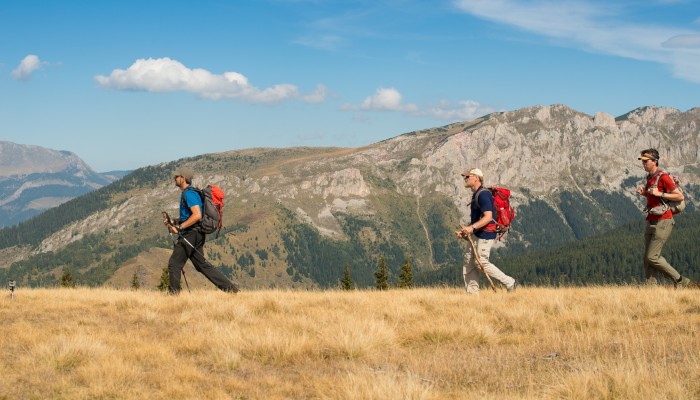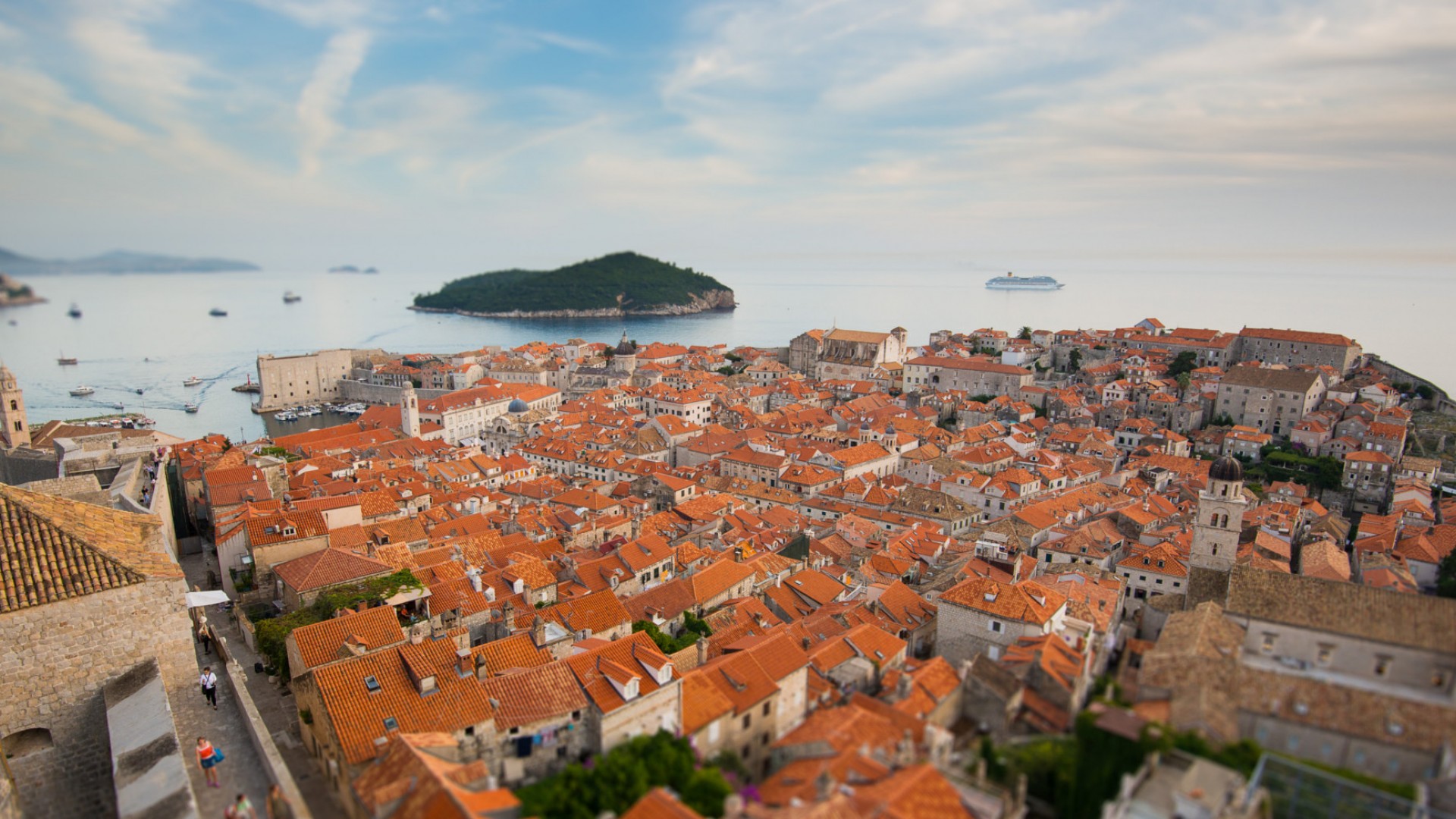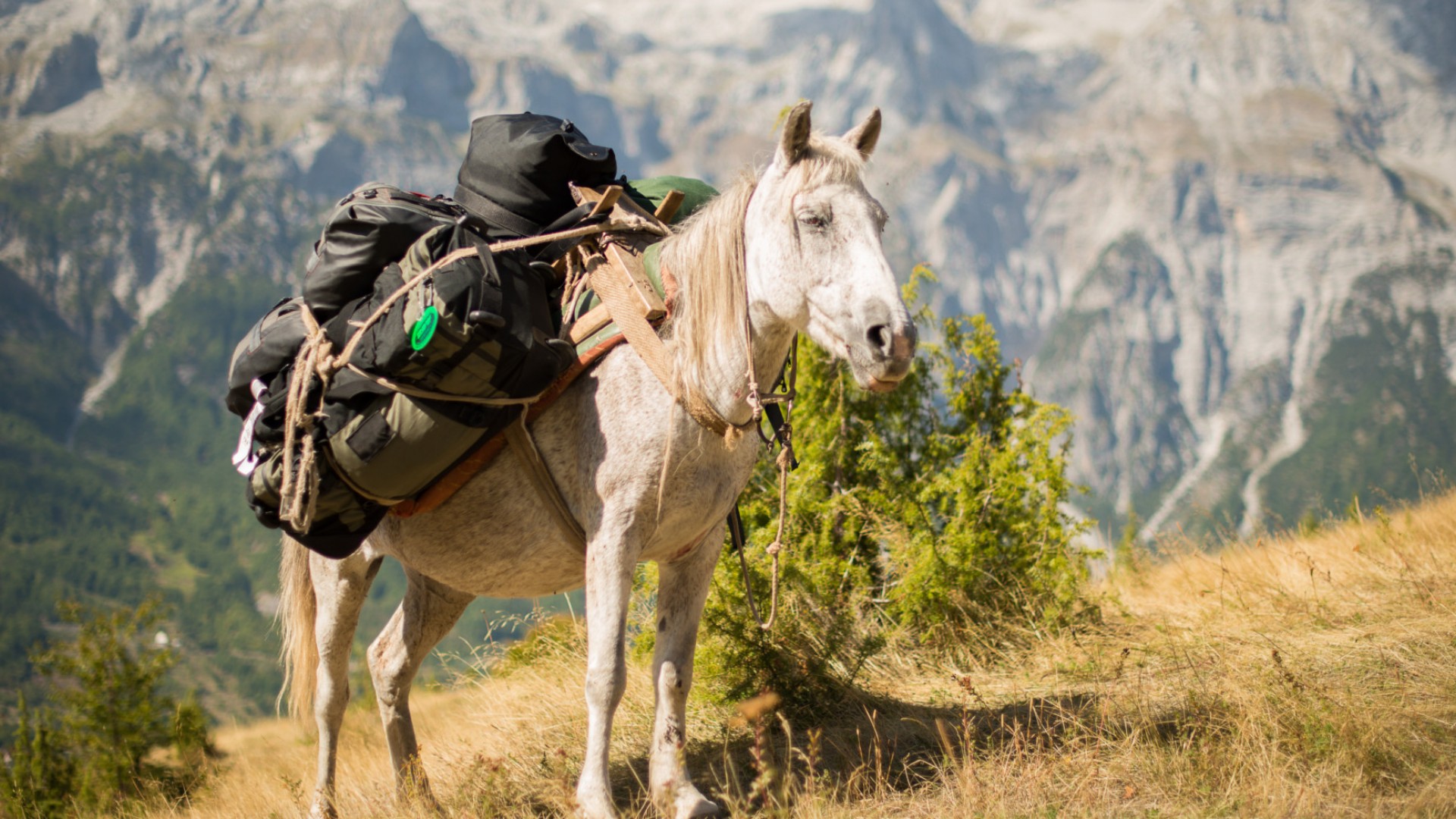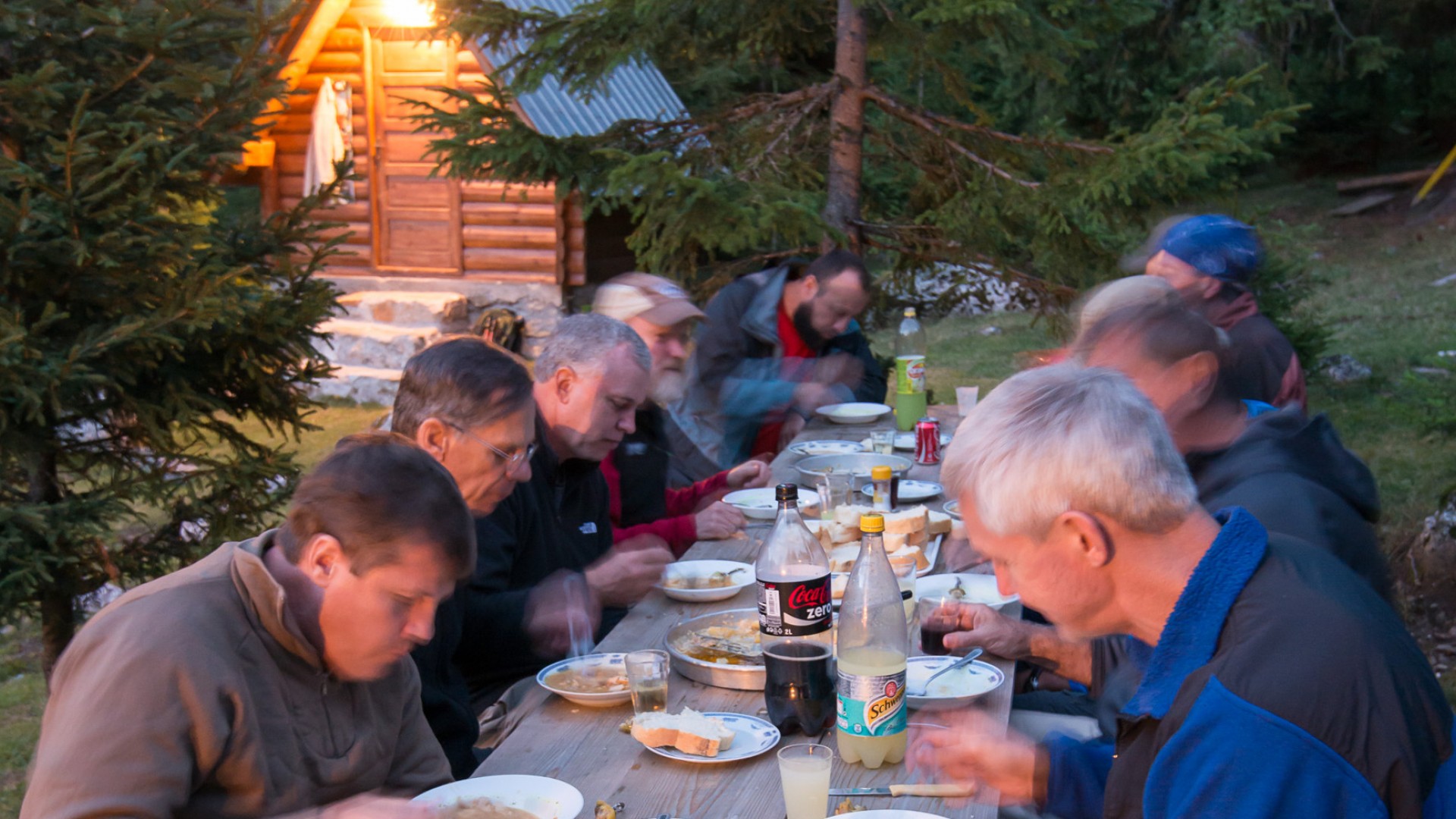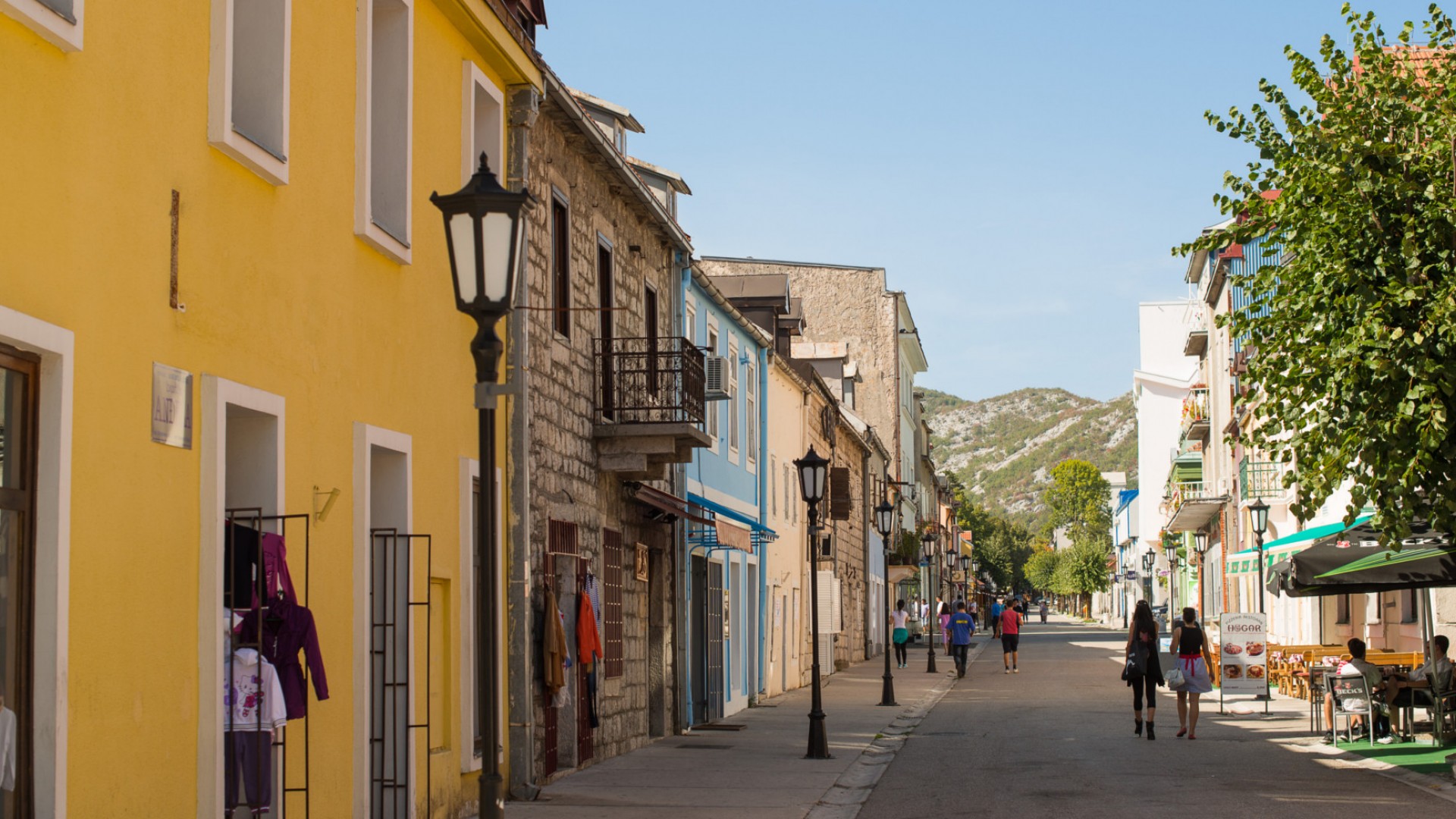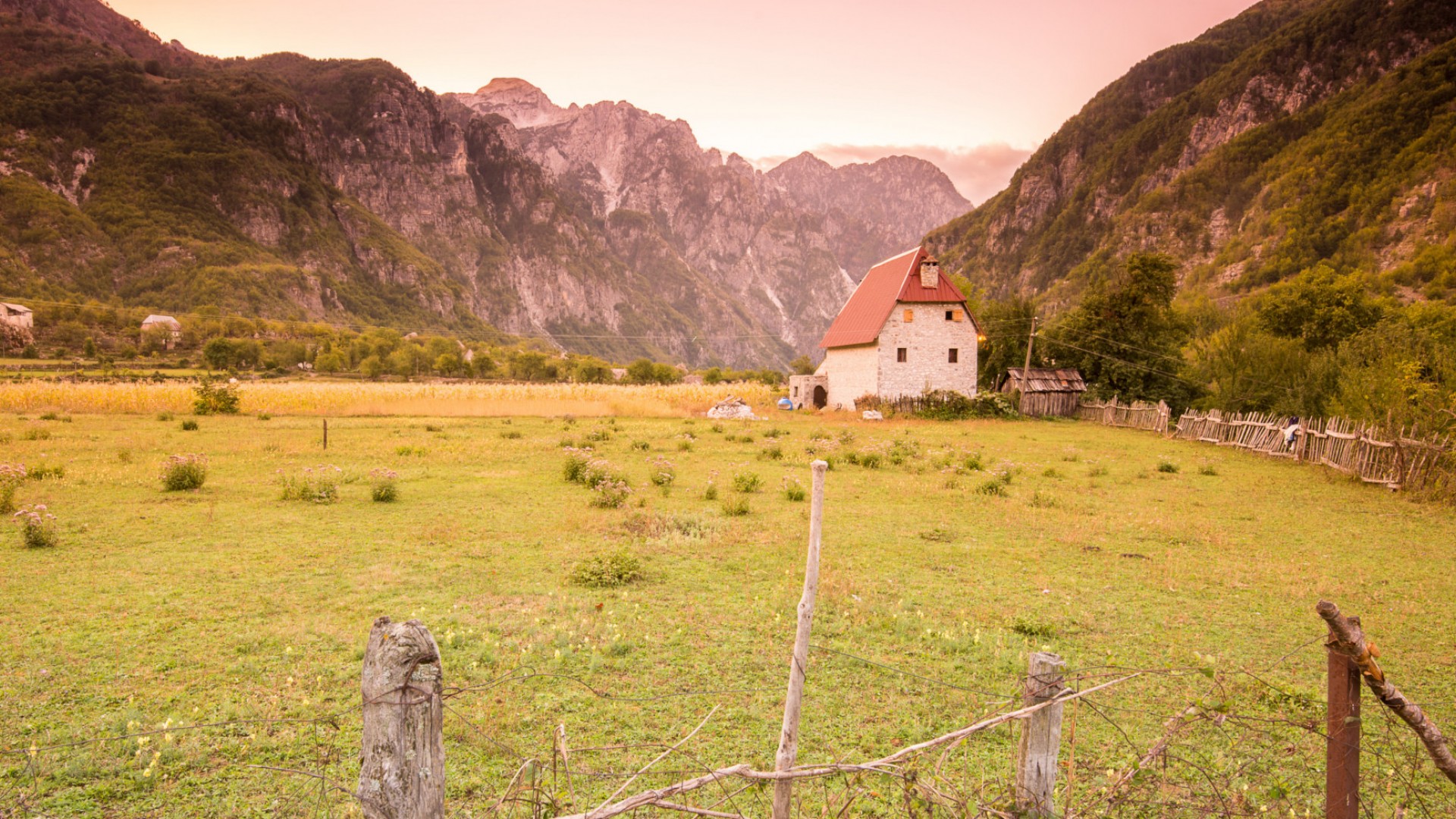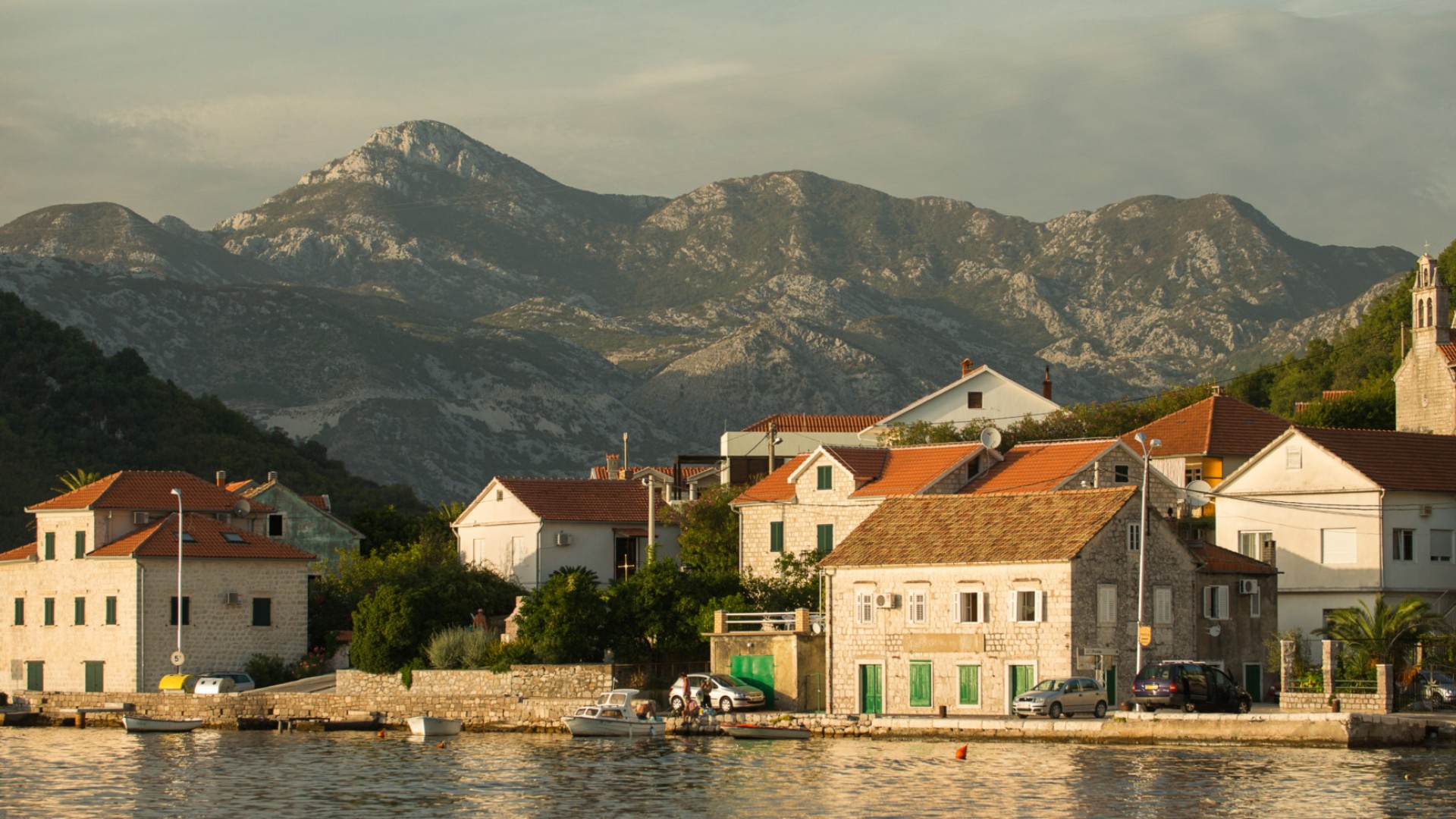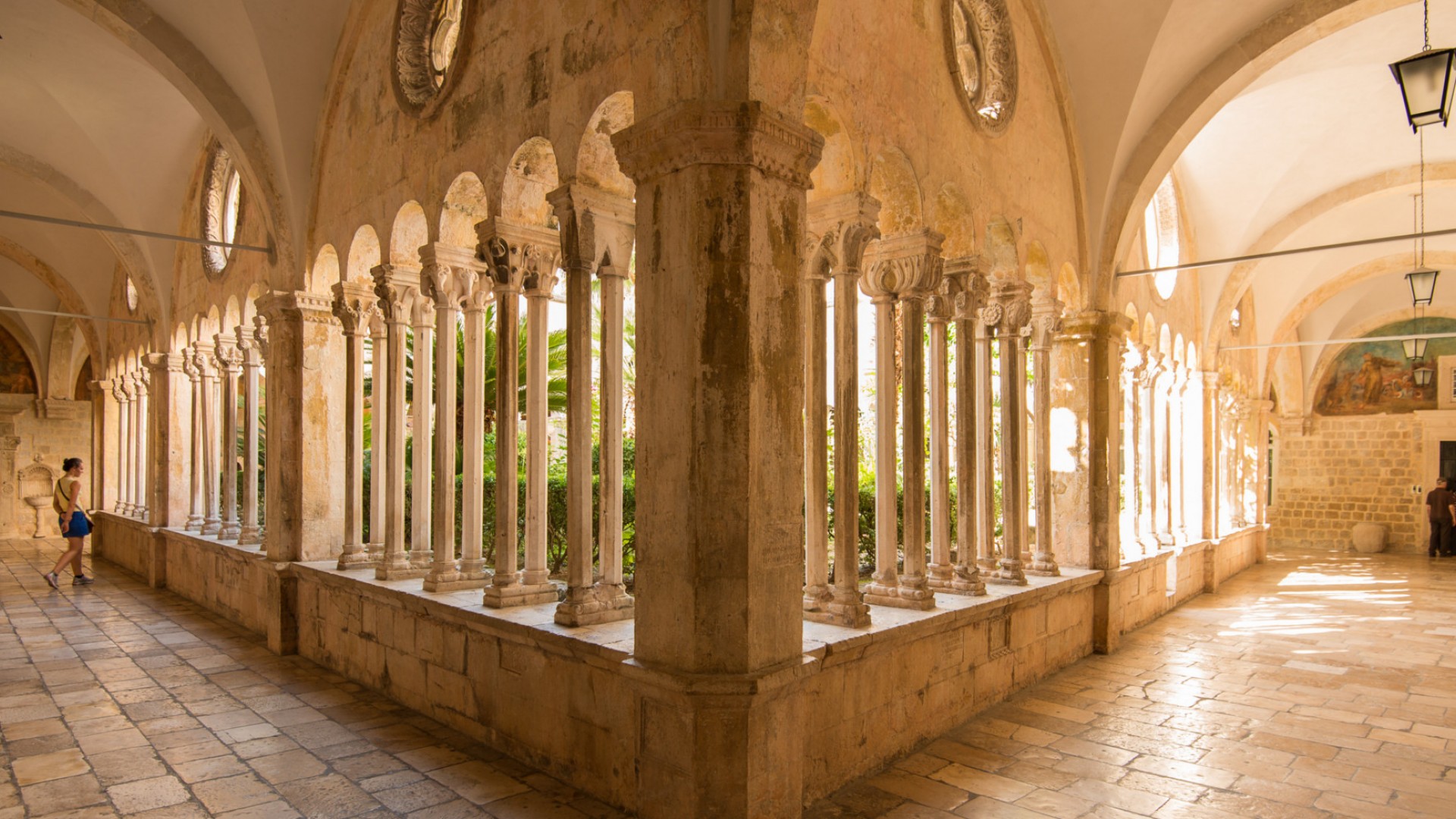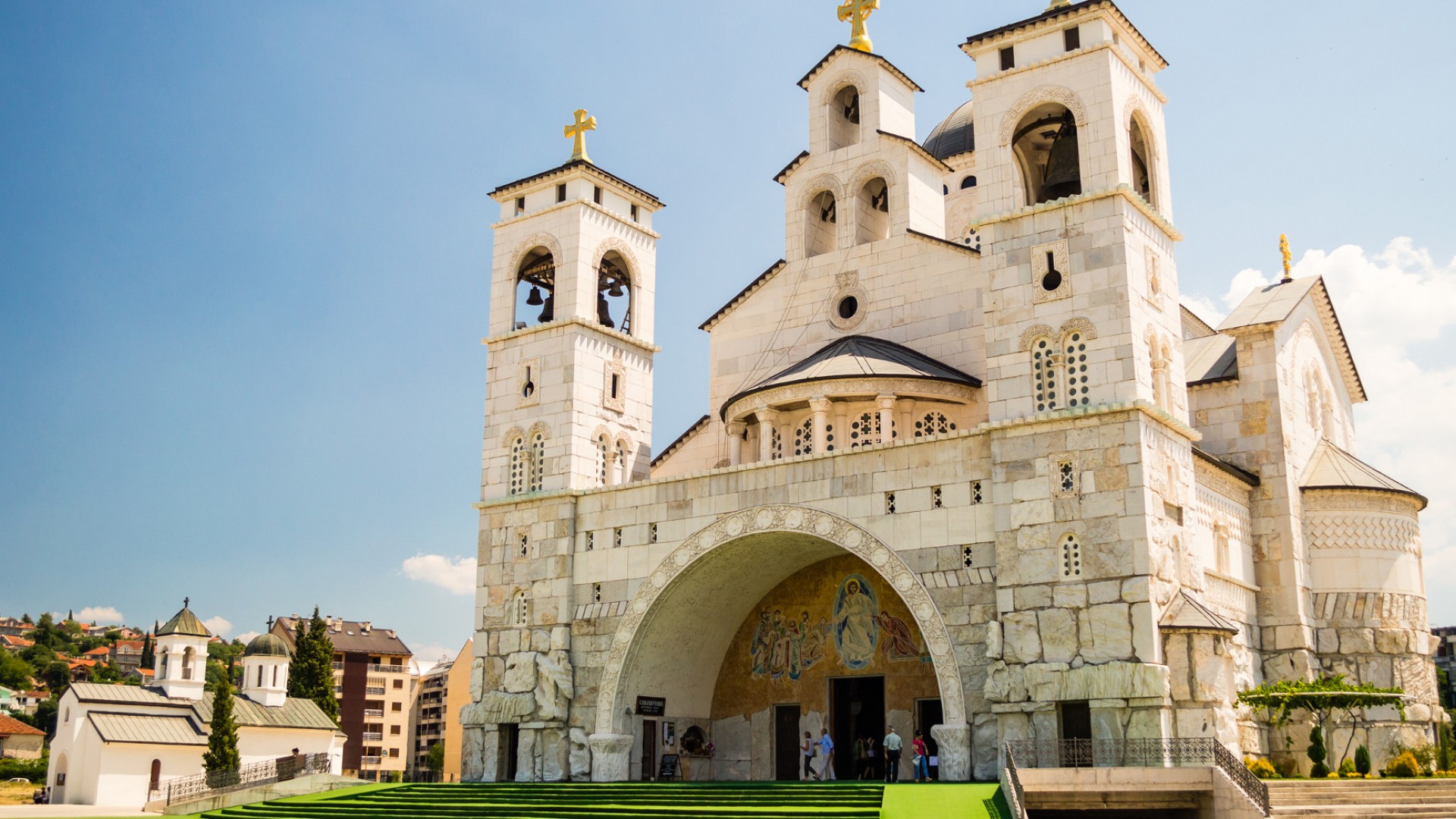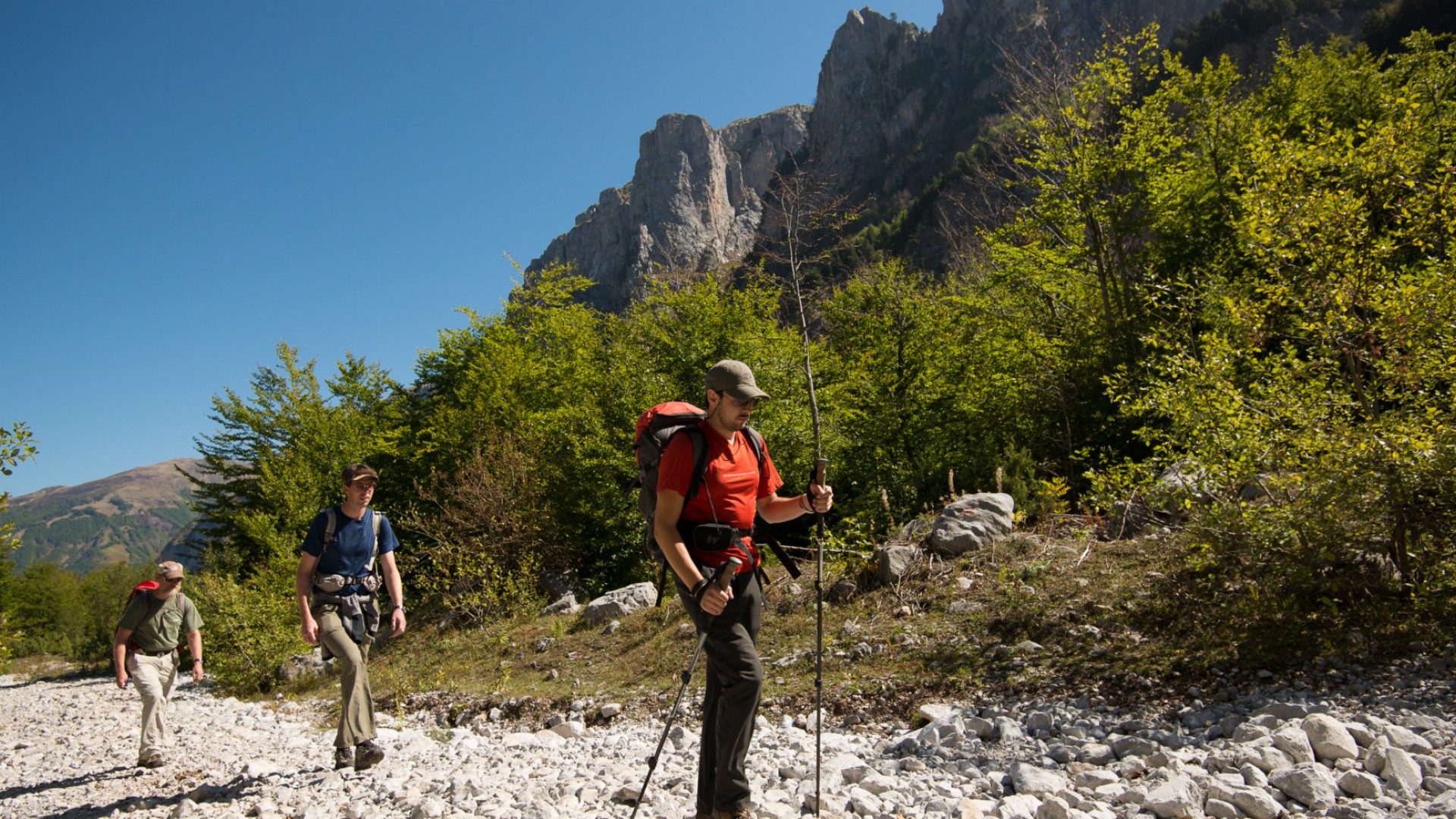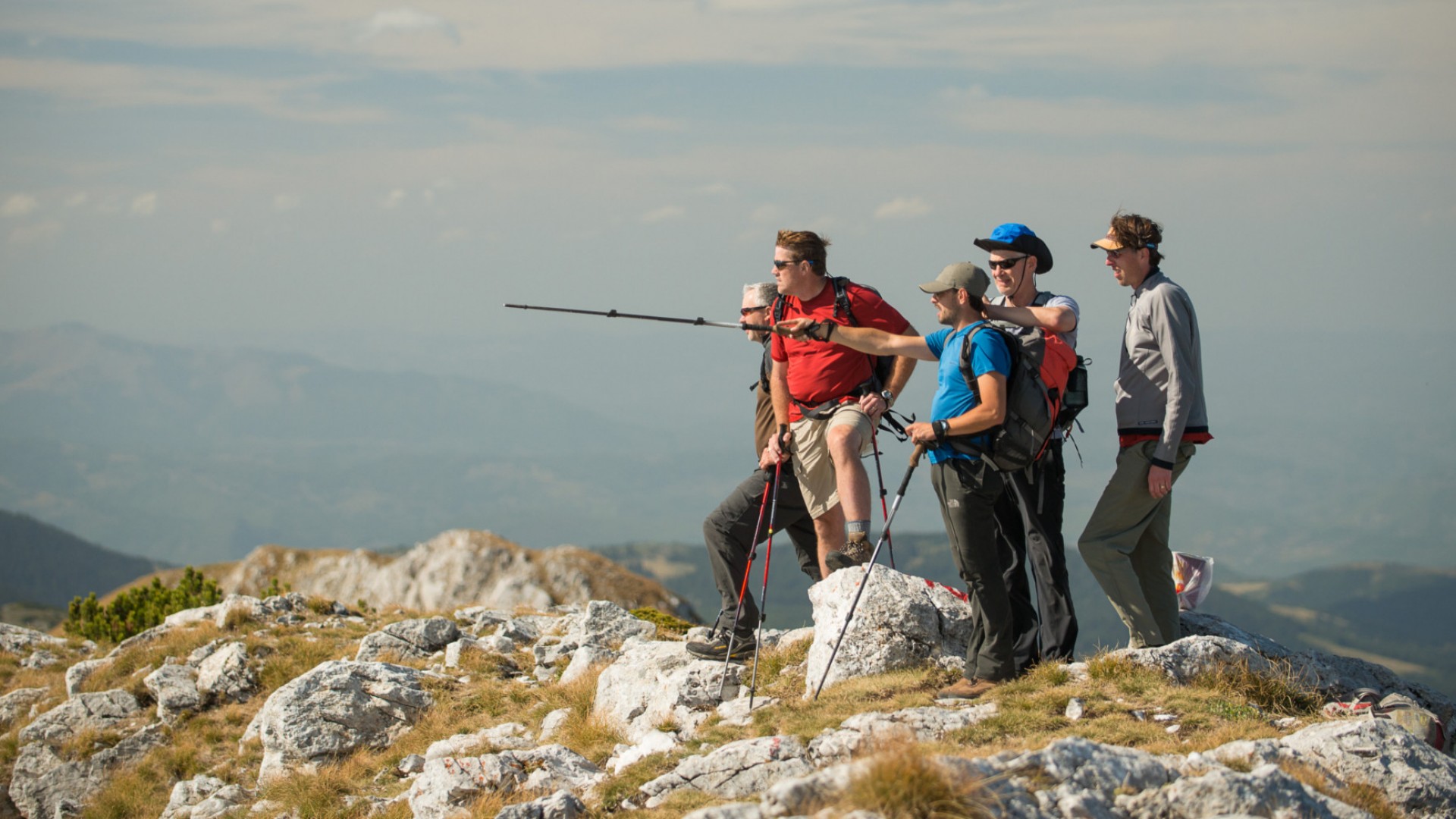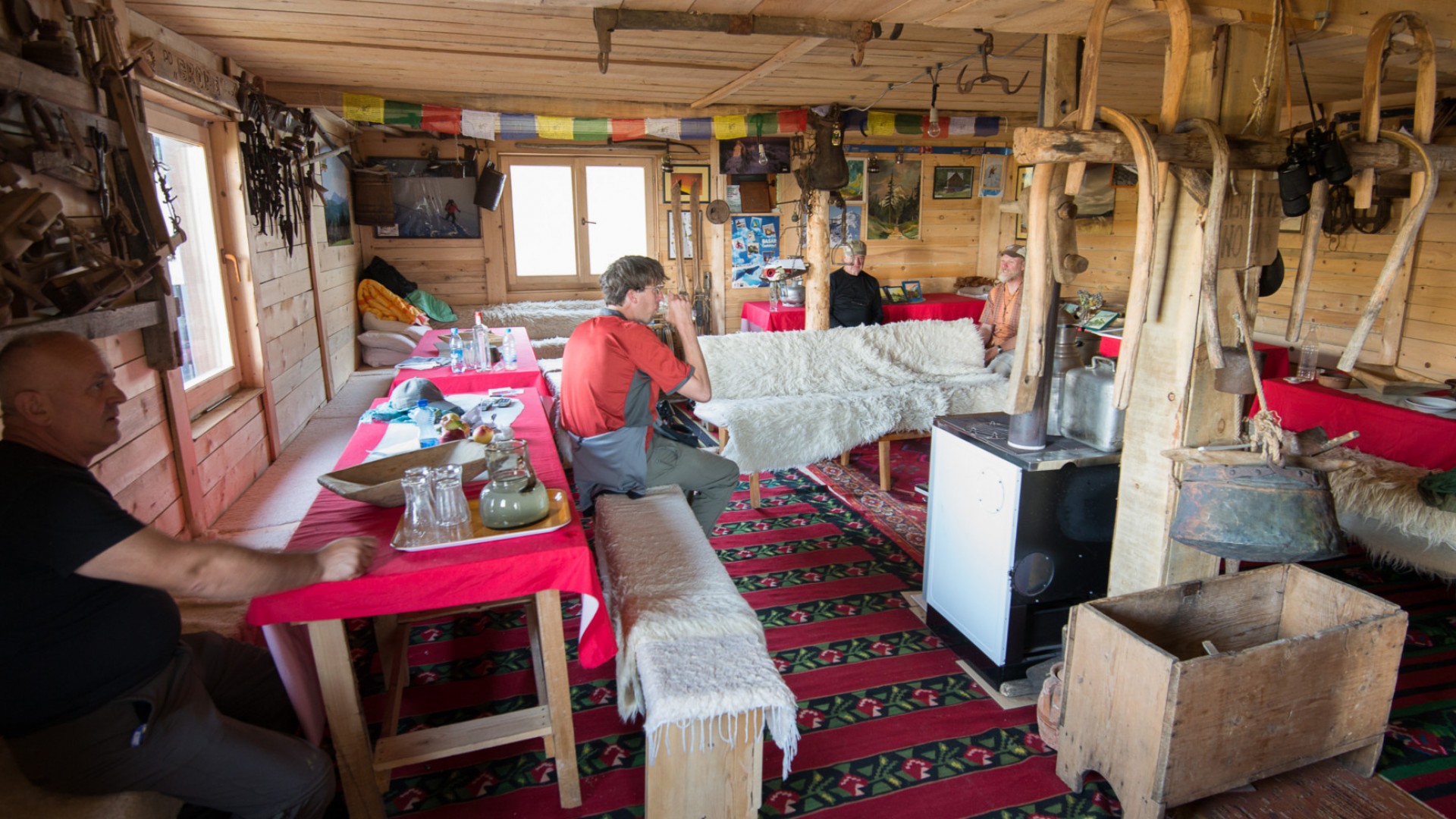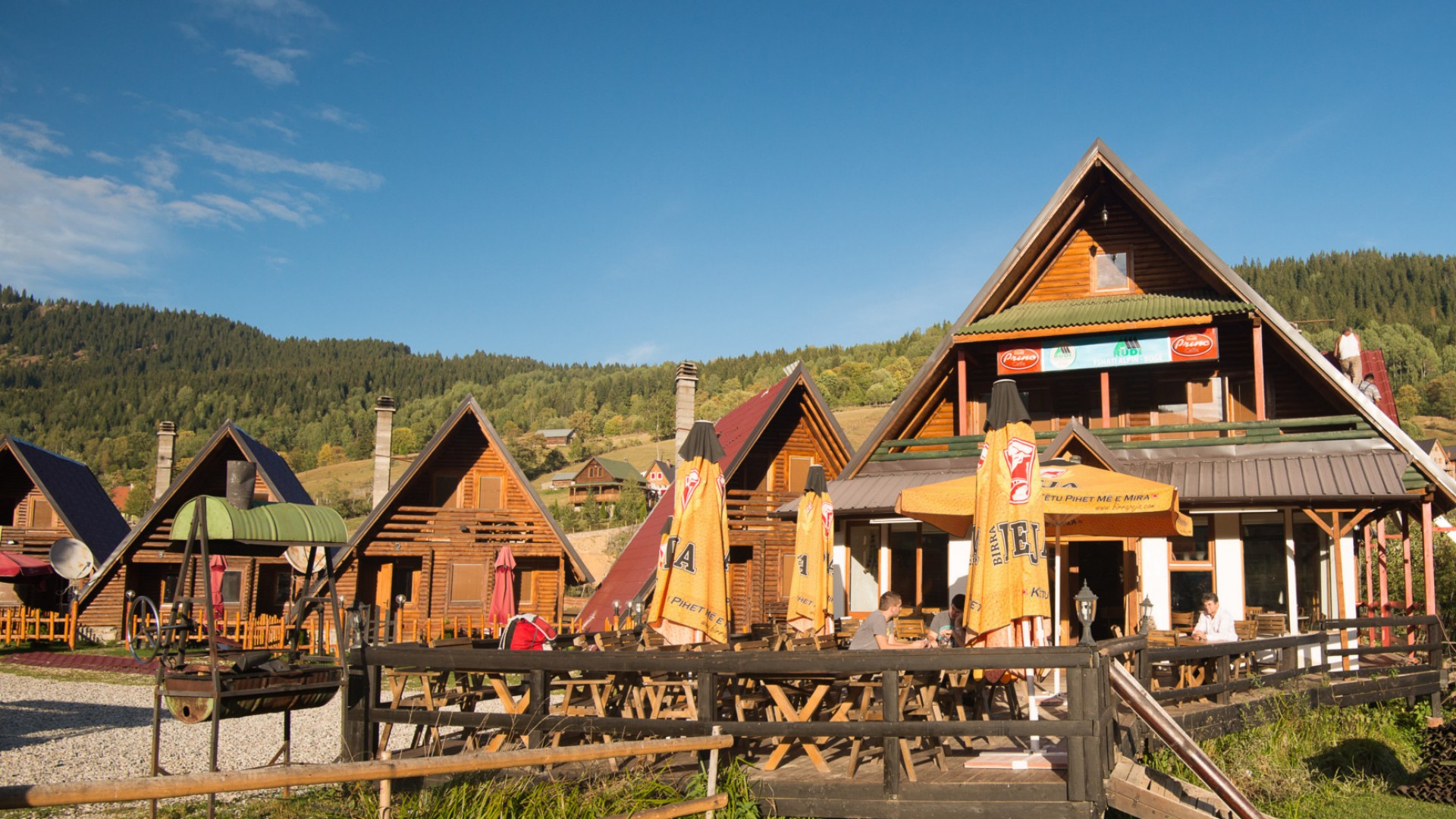Overview
Albania could perhaps be Europe's last secret. With its snow-capped mountains, weathered castles, rugged forests, historical villages, and haunting Alps, Albania's a world of natural and cultural beauty just waiting to be explored.
Located along the Mediterranean coast between Greece and Montenegro, Albania spent decades in isolation, saturated in political strain. After the fall of the Berlin Wall in 1989, however, the country began welcoming visitors from across the globe. In recent years, the villages of Albania have slowly begun to revitalize with renovated hotels, restaurants, bars, cafes, and monuments. Locals welcome visitors with open arms and offers of coffee, liquor, or a meal. Albanian cuisine is simple and Mediterranean-inspired, with fresh seafood, homemade bread, and colorful salads.
Visit Albana with Adventures Unbound to immerse yourself in the culture as well as the natural beauty of this untouched destination. Our tours include kayaking beneath the stunning Lightning Mountains, hiking rugged terrain, and learning about Albania's rich yet tumultuous culture from knowledgeable local guides. Sites of interest include Greco-Roman ruins, Islamic mosques, Orthodox churches, and more!
Our Trips
Custom Tours in Albania
With Adventures Unbound, discover Albania’s magnificent landscape and surrounding nature on foot or by paddle led by expert local tour guides who know the country’s landscapes, history, and culture like the back of their hand. Explore the picturesque mountains and serene coastlines of Albania in a more customized and intimate travel style.
Working closely with local partners and affiliates in Albania, let us curate a private tour that reflects your interests, whether it’s scaling mountains, relaxing by the water, or discovering new cultures. All of our customized tours in Albania include delicious local cuisine, comfortable accommodations, and endless adventures.
To get started, please fill out the form below, or you can learn more by reading some of our most frequently asked questions.
Image & Video Gallery
Country Guide
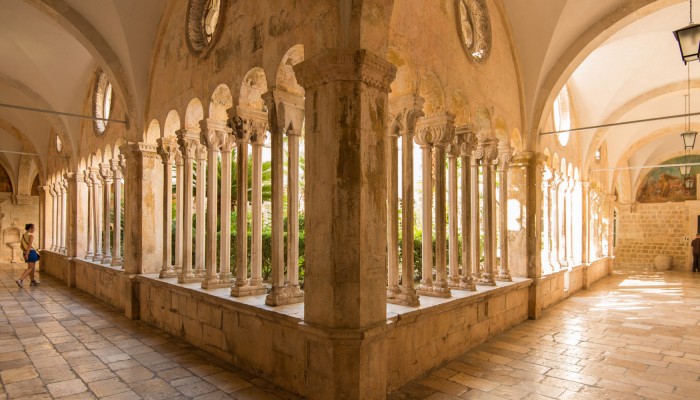
History of Albania
Early History
The history of the Albanian people predates the Greek and Roman empires. A variety of Stone Age era artifacts have been found near the capital, Tirana, the most famous site being the Cave of Pellumbas. Most tools produced from a variety of materials, namely flint, jasper, and bone have been found. Interestingly, most scholars agree that Albania, along with the rest of the Balkans, functioned as a kind of refuge during the most recent ice age because the climate in the region changed much less drastically than in other parts of Europe. It is also believed that an Albanian tribe migrated from the Balkans to found the ancient city of Mycenae during the late Bronze Age.
Early Antiquity
However, since early antiquity the Albanian history has been a story of subjugation by the various powers that have arisen around the Mediterranean Sea. Beginning as a nuisance to Greek and Roman commerce in the Adriatic Sea, the Albanians, or Illyrians as they were known then, were conquered and subjugated by the Romans in about 229 BC. The region that would later become Albania would remain a Roman province until the schism that divided the Roman from the Byzantine Empire. Albania had an odd place during this split: though administratively ruled by the Eastern Empire, ecclesiastically it remained under the jurisdiction of the Pope in Rome.
Medieval Period
In the Medieval period, the Byzantines vied for control of the land with the Bulgarian and Serbian Empires. Ultimately, Albania came under Ottoman rule in the fifteenth century and it remained as such until the early twentieth century.
Twentieth Century-Present
After gaining its independence at long last, Albania spent the next twenty years in between world wars shifting between a republic and monarchial state. During World War II, the newly independent nation was once again conquered by Italy in 1939 before becoming part of Nazi Germany in 1943.
Following the end of the war and the defeat of the Axis Powers, Albania became a communist nation under Enver Hoxha. The country was a part of the Soviet Bloc until the 1960s, when Hoxha withdrew from the Warsaw Pact. When Hoxha died in 1985 his successor, Ramiz Alia, started the slow process of democratization. Elections held in 1992 brought Aleksander Meksi to power. Though he later resigned as Albania’s economy collapsed, Meksi was Albania’s first Prime Minister outside of communist rule.
Currently, Albania is in the process of applying to join the European Union and has been a member of NATO since 2009.
For more information on Albanian Historical Periods, see our Albanian History Blog.
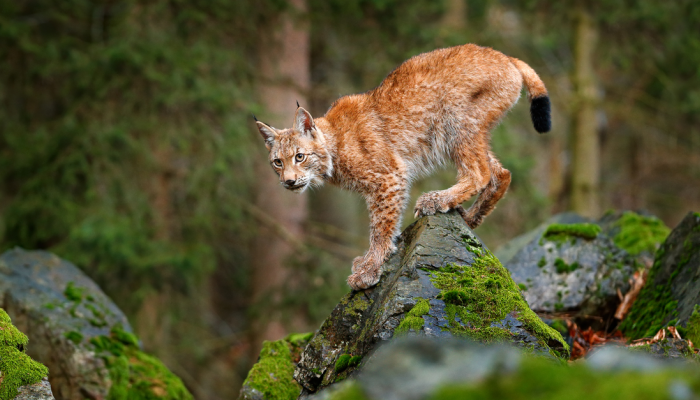
Wildlife of Albania
In all, about 760 different species of vertebrates can be found in Albania. Among these are 350 species of birds, 330 species of marine and freshwater fish, along with about 80 mammalian species. Relatively large populations of Albania’s national symbol, the golden eagle, can also found throughout the country’s vast forests. Lack of hunting regulations has taken a heavy toll on some of Albania’s native fauna. Included in these numbers are 91 globally endangered species, such as the Dalmatian pelican, the European sea sturgeon, the pigmy cormorant, and the Balkan lynx.
Notable Species of Albania
Golden Eagle
One of the best known birds of prey in the world, the golden eagle has been a prominent symbol of Albania for centuries and has been featured on the Albanian flag since the country’s independence in 1912. Though much of the golden eagle’s natural habitat has been lost due to human development, it remains a prominent bird of prey throughout Europe and North America.
Dalmatian Pelican
Native to southeastern Europe and parts of China and India, the Dalmatian pelican is one of the largest living species of flying birds in the world, both in terms of weight and wingspan. While there were once millions of these birds in the Balkans, now only 20,000 live in the entire world. The reasons for the Dalmatican pelican’s decline are not entirely understood, but there are many hypotheses, the most common being human development of wetlands and human activity in their remaining habitats. Often, the pelicans become so disturbed by power boats that they are unable to feed and die of malnutrition. Poaching and fishermen shootings, who fear the pelicans are threats to their livelihoods, are also factors contributing to their decline. In Europe these birds generally only migrate short distances. While a generally silent bird, these pelicans become increasingly vocal during mating season, which occurs in March or April. Unlike other species of pelican, Dalmatian pelicans are the least social.
Pygmy Cormorant
Pygmy cormorants, natives to southeastern Europe and southwestern Asia, prefer wetland habitats to cold, dry places. They are therefore found predominantly in southeastern Albania. Once there were hundreds of thousands of these birds to be found throughout the Balkan peninsula. However, due to agricultural policy throughout the Balkans under communist rule, which strongly emphasized agricultural self-sufficiency, large swaths of their wetland habitats were drained to accommodate agricultural expansion. Currently, fisherman pose the greatest threat to pygmy cormorants, as they often destroy their nests to conserve fish resources. These small birds also frequently get caught in fishnets, which can prove fatal. TheInternational Union for Conservation of Nature now protects the pygmy cormorant as a vulnerable species.
Balkan Lynx
Balkan lynx are found almost exclusively in Albania and Macedonia, with smaller populations living in Montenegro and Kosovo. This subspecies of lynx have been on the brink of extinction for over a century. Though Balkan lynxes remain the largest wildcat in the Balkans, it is thought that only around 50 still survive. Estimates say 30 to 40 may remain in Macedonia, while 15 to 20 survive in Albania. Though the Balkan lynx has been protected by law since 1969, it is thought that illegal poaching continues to diminish their numbers in their final remaining habitats.
European Sea Sturgeon
Despite the European sea sturgeon’s expansive habitat range, these fish have become so rare that they are only known to breed in the Garrone River basin in France. Found on nearly every shore in Europe, including in Albania, European sea sturgeons have incredibly long lives, sometimes living to as old as 100 years. Once used extensively to produce caviar, they are now considered a critically endangered species and have been protected since 1982. Conservation projects have gained momentum since the early 90s, usually involving reintroducing species to ancient habitats.
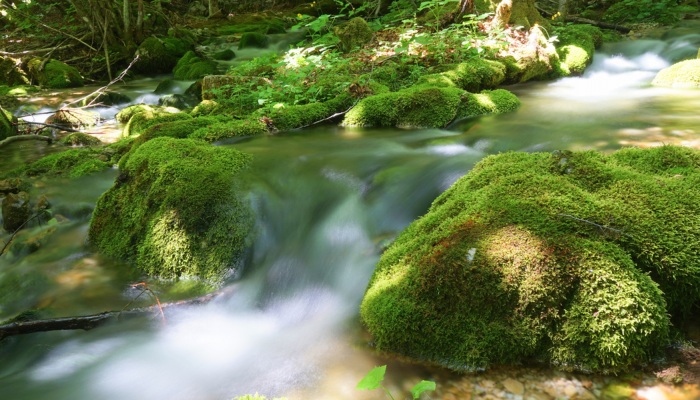
Flora of Albania
Despite being small, Albania is rich in biodiversity. Only a small part of the land is completely without vegetation and about 1/3 of the country is heavily forested. An estimated 3,000 species of plants grow in Albania. According to the European environment agency, Albania can be divided into roughly three ecoregions: the Illyrian deciduous forests, Pindus Mountains mixed forests and Dinaric Alpine mixed forests.
Illyrian Deciduous Forests
Illyrian deciduous forests, found throughout the Balkan Peninsula and in Eastern Mediterranean regions, stretch along Albania’s Adriatic and Ionian coasts. At higher altitudes, the most common plants are various conifers, such as Norway spruce, silver fur, and European black pine. The broadleaf and deciduous European beech can be found as well at higher altitudes intermixed among these conifers. Meanwhile, broadleaves are much more common at lower altitudes. In Albania various species of deciduous oaks and marquis shrubs compose most of the lowland and coastal flora.
Pindus Mountain Mixed Forests
Exclusively found in mountainous Balkan regions, the Pindus Mountain mixed forests of Albania make up the country’s easternmost region, mainly along the border of Greece. Many of the same species of plants grow in this region as in the Illyrian forests. Black pines are once again common, along with the European beech at high elevations. Lower elevations are home to old friends such as deciduous oaks. However, these lower regions are also much more diverse, containing various juniper trees, deciduous chestnuts, and Palestine and Kermes oaks. In contrast with the Illyrian forests, which can be found from the mountains to the coast, the Pindus Mountain mixed forests are entirely landlocked.
Dinarlic Alpine Mixed Forests
As its name suggests, the Dinaric Alpine forest grows exclusively in the northern regions of Albania. Once again the conifer regions in these forests are dominated by conifers like Norway spruce, silver fur, and European black pine, with a smattering of the European beech. Austrian and Hungarian oaks are also common, as is the Oriental hornbeam.

Culture in Albania
Demographics and People
Total population: Around 2,811,000 (2015 estimate)
External and Urban Migration: Massive migration has occurred out of Albania since 1990. Most of this immigration is due to the fall of the communist regime, when immigration out of the country was prohibited. Experts estimate that approximately 900,000 people left Albania between 1990 and the early 2000s. Similarly, urban micration has grown since the fall of the totalitarian government. This urban migration also originates in communist practices that constrained internal migration.
Ethnic Populations: Albania is wildly considered to have one of the most homogenous populations in Europe. Official records show that non-Albanian minorities account for less than one-tenth of the total population. Despite these official statistics, many minorities in Albania dispute the official numbers, arguing that they share a larger portion of society than accounted for. For example, official records document Albanian’s of ethnic Greek descent as having a population of 24,243. However, the Greek government estimates that as many as 300,000 ethnic Greeks live in Albania. One reason for the discrepancy is an Albanian law that threatens a hefty fine imposed on anyone declaring an ethnicity other than what is on their birth certificate. Macedonians and Greeks believe the law to be used to intimidate minorities into declaring Albanian ethnicity, though the Albanian government dismisses these allegations.
Religion
Albania has a fraught history of religious oppression and has only recently begun the democratic practice of religion freedom so valued in other Western states. Islam was the dominant faith while Albania was under the Ottoman Empire, and authorities often arrested dissenters. Meanwhile in the twentieth century the communist regime attempted to eliminate religious practice from the country entirely, proclaiming itself the first atheist state.
In the twenty-first century, religion continues to play only a minor role in the lives of most Albanians. Only 39% of Albanians saying religion plays an important role in their lives. According to a 2011 census, roughly 58% of the country identify as Muslim, making Islam the largest religion in the country. 17% identify as Christian, making it the second largest religion. 25% identified as another religion, as non religious, or were unwilling to declare their religious affiliation. However, several religious organizations refused to recognize the results this survey, such as the Albanian Orthodox Church, which claimed a quarter of the nation as adherents to the faith.
FUN FACT: Interestingly, Albania is the only European country were the Jewish population grew during the Holocaust; this population growth was the result of many Jews fleeing the fascist regimes of Germany, Italy, and the various countries the regimes came to dominate during the war. Since the advent of the state of Israel, most Albanian Jews have emigrated to the Jewish State, leaving only about 200 Jews remaining in Albania.
Art
The history of Albanian art was, until recently, directly tied to the dominant political factions of the era when the works were produced. Throughout the medieval period, most of the artwork was related to the church. Mosaics, murals, and frescoes reflected the influence of Roman Catholicism. Once the Ottoman Empire took over, the art began to mimic the icons of the Byzantine Orthodox tradition, a demonstration of Constantinople’s growing influence over the region. It is generally agreed that this resulted in a kind of artistic stagnation that Albania did not emerge from until it gained its independence from the Ottomans.
An Albanian artistic renaissance took place following independence. During the interwar period much of the artwork reflected the growing nationalism of the time. In part this was due to independence, but another important factor was Albania’s isolation from the rest of Western Europe. In this period, historical figures, such as Skanderbeg, were immensely popular in paintings and sculpture.
Art reflecting Albanian national pride came to a close following the communist takeover after World War II. As with other communist countries, in Albania art was heavily censored. Artists were encouraged to endorse the party with their works. From the 1950s into the late 70s art often depicted domestic scenes. The proletariat became the new national heroes. Instead of Skanderbeg, men and women at work became the fashion. Similarly, landscape paintings were immensely popular.
Since the late 80s and early 90s Albanian art has shifted. While the focus in many ways is still to capture the lives of real Albanians, artists are able to incorporate new postmodern forms and ideas into their work. Scholars continue to identify most Albanian art as social realist, due to its preoccupation with the social realities of the Albanian people. However, the focus on the people of Albania ensures that the art maintains a distinctly Albanian look despite the influence of foreign ideas and styles. The artworks of Anri Sala, Sislej Xhafa, and Helidon Gjergji--several of the most famous contemporary Albanian artists--are often on display at the Tirana Biennale, an international art event founded in 2001 for Albanian artists.
Cuisine
Albanian cuisine is distinctly Mediterranean and is heavily influenced by Greek, Italian, and Turkish cuisine.
- Herbs often used throughout the Mediterranean, such as oregano, mint, basil, and rosemary, are commonplace in Albanian dishes. Albanians also rely heavily on chili peppers and garlic to spice their dishes.
- Smoked meats and pickled vegetables are common in the highland region. When cooking meat, every part of the animal is often used, with the head, intestines, and other internal organs being considered delicacies.
- Seafood, a rarity in the mountains, is common along the coast, with many coastal cities having their own specialties or methods of preparing the dish.
- Dairy is an essential part of almost every meal.
- Rakia, or raki, a native alcoholic beverage, is also important in its own right. Common throughout the Balkans, each region has its history with the beverage. A fruit brandy, in Albania varieties are usually around 40-50% alcohol by volume (ABV). However, homemade varieties often reach 70-90% ABV. In Albania it is usually made from, plums, grapes, apricots, and sometimes even mulberry or walnuts in the colder alpine regions. It is supposed to be drunk from special glasses, which can hold around 50 ml. Rakia is typically served at the beginning of a meal with a side of figs.
FUN FACT: Rakia has made its way into many religious rituals in Albania. For instance, it’s traditionally served at funerals, where the guests are served a piece of bread and a glass of rakia. The guests are expected to spill some on the ground for the soul of the departed.

Geography in Albania
Albania shares borders with Montenegro to the north, Kosovo to the northeast, Macedonia to the east, and Greece to the southeast. To the west and southwest lie the Adriatic and Ionian Seas respectively. Italy, Albania’s nearest western neighbor, lies about 50 miles across the Strait of Otranto.
Albania itself stretches about 210 miles from its northernmost point bordering Montenegro to its southern tip along the Ionian Sea. Albania’s westernmost point along the Adriatic Sea to its border with Greece extends about 95 miles. All in all, Albania has a total area of about 11,082 sq. miles.
The Prokletije, The Dinaric Alps and the Southern Albanian Highlands
About three-fourths of the land in between the Prokletije, the Dinaric Alps, and the Southern Albanian Highlands borders mountains or foothills with elevations of at least 650 feet above sea level. Most of this land is an extension of the Dinaric Alps to the north.
The Dinaric Alps makeup the northernmost side of the country—a rugged, forested and sparsely populated land compared to the country’s southerly regions. This region is almost completely unnavigable due to the steep gorges and canyons resulting from the region’s winding rivers. There are few roads and those that exist are of poor quality. The lack of roads makes both internal and external communications impossibly difficult.
The Highlands lie in the easternmost portion of these mountains, near the border with Macedonia. Here, you may find Mount Korab, Albania’s highest peak, which rises to about 9,030 feet above sea level. This area, along with the Prokletije, is possibly the most rugged and inaccessible region in all of the Balkan Peninsula. Serpentinite minerals and limestone dominate this region’s geology.
The Southern Albanian Highlands lie in the less rugged, more densely populated sections of the Dinaric Alp's southern and western ranges. This section serves primarily as pasture for livestock. Limestone is once again the predominant mineral and is responsible for the formation of the valleys here. However, a blend of softer rocks accounts for the wider valleys instead of the sharp cliffs found in the north.
Coastal and Central Albania
Albania's low and fertile alluvial plains can be found along 121 miles of the coast of the Adriatic Sea and, at points, extending nearly 30 miles inland. This area is Albania’s most densely populated region and is dedicated mostly to the country’s agriculture and industrial industries.
Albania’s largest city and capital, Tirana, is located in this area, about 20 miles inland from the Adriatic Sea. With a total population of over 800,000 people, Tirana is the only city in Albania with a population greater than 500,000. As the country’s largest city, it is central to political, economic, cultural, and religious Albanian life and is home to many public institutions, universities, and museums dedicated to Albanian art and history.
Drainage: the Drin and Other Rivers
Nearly all the precipitation that falls in Albania is drained via rivers leading to the coast. As such, most of the country’s rivers flow from the east to the sea in the west. The largest of these Albanian rivers is the Drin. Originating in Kosovo, the Drin stretches for about 175 miles through the northern, mountainous region of Albania. The Drin River is extremely important to Albania’s economy, especially energy production. Four hydropower facilities along the river’s course produce most of Albania’s electricity.
Other major river ways in Albania include the Seman, the Shkumbin, and the Vjosë. Each of these rivers drain the southern region of the country and are central to Albania’s agricultural production in the eastern portion of the country. Typically these rivers and the streams that flow into them are torrential in the winter while being nearly or completely dry in the summer, sometimes only carrying a tenth of their winter averages. These highly irregular and seasonal flow patterns limit the impact of these rivers and streams and make them and the surrounding lands almost unnavigable and nearly impossible to use for economic development.
Lakes
Albania is also home to a number of lakes, the largest of which is Lake Scutari in English, or as it is known to Albanians, Lake Shkodër. Located in the Northwest portion of the country, only one-third of the lake is actually located in Albania, the rest residing in Montenegro. Other major lakes include Ohrid and Prespa along Albania’s eastern border with Macedonia. Ohrid, the largest of these two lakes, is famous for its unique flora and fauna; due to its ecological value, it is under the protection of UNESCO.
Travel Essentials

Money in Albania
Currency and Exchange Rate
Albania’s official currency is the lek (L), which is divided into 100 qindarka, although these are no longer in production. Banknotes come in 5,000, 2,000, 1,000, 500 and 200 lek while coins are issued in 100, 50, 20, 10 and 5 lek. The exchange rate as of January 2021 is around 100 lek to $1 USD.
Currency Accepted
The Euro is taken in many stores throughout the country, but travelers should be wary: often resellers of expensive commodities will attempt to trick the unwary into thinking that something is cheaper in Euros than in lek, when in reality the exchange rate makes them the same price.
ATMS
ATMs are available in most Albanian towns.
Tipping
Tipping is not compulsory in Albania but it has come to be expected in restaurants, bars, and cafes. In most cases, people will just round up the bill or leave around 10% as a tip for service staff. With taxi drivers, you can just allow them to keep the change. Between 100 to 200 lek per night is sufficient for cleaning staff in hotels, along with a note to let them know that it is a gratuity and wasn’t left accidentally.

Health & Safety
Drinking Water
Good health is often a requirement for traveling and travelers hope to maintain that health throughout their journeys. One of the easiest ways travelers fall prey to illness is the drinking water. In some parts of Albania, tap water is safe to drink. But in others, it’s not. Most locals in urban areas prefer to drink bottled water and just use tap water for washing dishes, cooking, and brushing their teeth. It’s recommended that visitors to the country do the same, just to be on the safe side. If you’re journeying to the mountainous parts of Albania, the drinking water is generally safe, but always check with the locals first.
Vaccines
There are no required vaccinations for visiting Albania, although you will need a yellow fever certificate if you’re arriving from an at-risk country. The Center for Disease Control and Prevention (CDC) also advises that travelers should be up-to-date on their routine vaccinations, including measles, chickenpox, diptheria, tetanus, and polio. Vaccinations against hepatitis A and hepatitis B are also recommended, as is rabies if you plan on being in close contact with animals.
Healthcare
Throughout Albania healthcare is cheap relative to Europe. For any serious injury or illness, it is recommended to travel to Tirana, which has the best access to medical care in the country and the most English speaking doctors.
Safety
Traveling in Albania is generally safe, with low levels of crime and pickpocketing compared to other European destinations. Vehicle theft is not uncommon, however, so you should ensure your rental car is locked and don’t leave valuables inside. If possible, park your car in a secure parking area where there are guards on hand. Credit card fraud is another concern in the country, so always be cautious when making ATM transactions.
If you are worried about your safety, we recommend that you travel with a reputable tour company. You can also check any current travel warnings issued by the U.S. Department of State prior to leaving home.
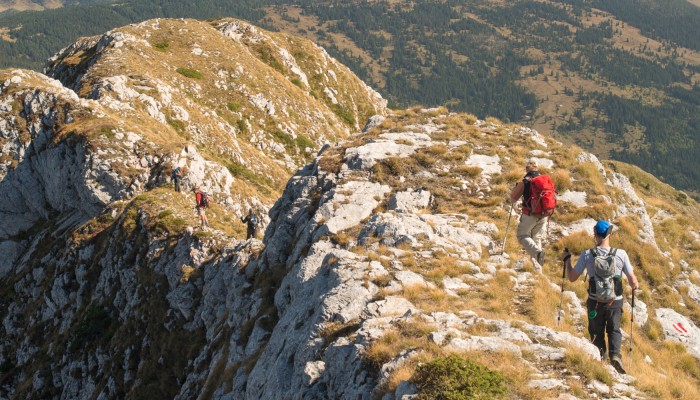
Entry Requirements
Passport and Visa
A passport that’s valid for at least three months from the date of arrival is required for entry to Albania and you should have at least two free pages for entry and exit stamps. European Union citizens, Canadians, Americans, Australians, and New Zealanders can enter the country without a visa, provided they don’t plan on staying for more than 90 days.
Immunizations
There are no required vaccinations for visiting Albania, although you will need a yellow fever certificate if you’re arriving from an at-risk country. The Center for Disease Control and Prevention (CDC) also advises that travelers should be up-to-date on their routine vaccinations, including measles, chickenpox, diptheria, tetanus, and polio. Vaccinations against hepatitis A and hepatitis B are also recommended, as is rabies if you plan on being in close contact with animals.

Internet & Phone Service
Internet
Albania has widespread wi-fi, with internet cafes littering larger cities.
Phone Service
It will be difficult to find many public phones in Albania, so many travelers come prepared with prepaid SIM cards and unlocked GSM cell phones that support Albania's network frequencies. That being said, while Albania has good cell coverage overall, many remote locations have only limited coverage.
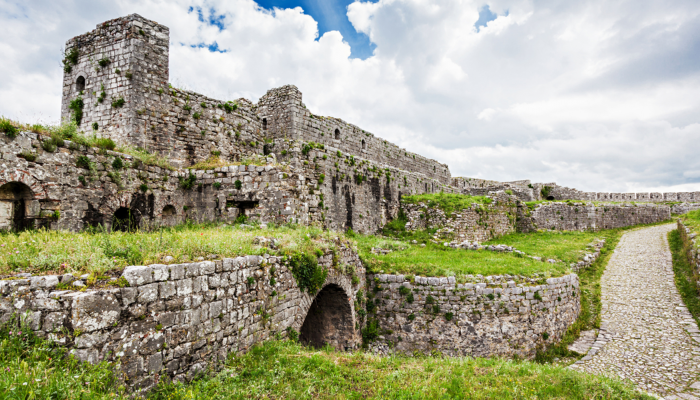
Power in Albania
Electricity and Adapters
Albania uses standard European sockets with round, two-pronged plugs and a standard voltage of 230V. Citizens of the United States, Canada, Australia, New Zealand, and Britain will need to bring a power plug adapter to use their appliances. It’s worth being aware that power outages are a common occurrence in Albania, so always power up your devices when you have the chance.
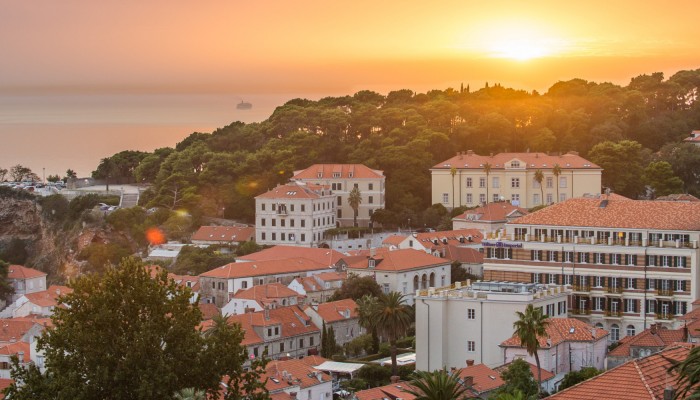
Getting to Albania
By Plane
Several airlines offer daily flights to Tirana, Albania's capital city, from Paris, Vienna, Frankfurt and other European cities.
By Boat
It's also possible to take a ferry from Bari, Italy to Durres, Albania before of after your trip.
By Land
You might prefer to fly to a neighboring country and travel by hired car.
FAQ's
What immunizations are recommended or required?
There are no required vaccinations for visiting Albania, although you will need a yellow fever certificate if you’re arriving from an at-risk country. The Center for Disease Control and Prevention (CDC) also advises that travelers should be up-to-date on their routine vaccinations, including measles, chickenpox, diptheria, tetanus, and polio. Vaccinations against hepatitis A and hepatitis B are also recommended, as is rabies if you plan on being in close contact with animals.
Can I drink the water in Albania?
In some parts of Albania, tap water is safe to drink. But in others, it’s not. Most locals in urban areas prefer to drink bottled water and just use tap water for washing dishes, cooking, and brushing their teeth. It’s recommended that visitors to the country do the same, just to be on the safe side. If you’re journeying to the mountainous parts of Albania, the drinking water is generally safe, but always check with the locals first.
What type of Currency is used? Exchange Rate? Are US dollars accepted?
Albania’s official currency is the lek (L), which is divided into 100 qindarka, although these are no longer in production. Banknotes come in 5,000, 2,000, 1,000, 500 and 200 lek while coins are issued in 100, 50, 20, 10 and 5 lek. The current exchange rate is around 100 lek to $1 USD.
Generally speaking, US dollars aren’t accepted as payment in Albania but Euros can be used at some supermarkets and international hotels (where prices are often quoted in Euros). You will, however, usually get a better deal if you pay in lek. Smaller businesses, restaurants, and taxis will only accept lek.
There are plenty of bureaux de change where US Dollars, Euros, and British Pounds are readily accepted, although it’s worth keeping in mind that Albanian lek can't be exchanged outside of the country, so try and either spend or exchange them before you depart. Banks in Albania are usually open from 9 am to 3.30 pm Monday to Friday. Major credit and debit cards are accepted at most banks and ATMs, as well as at large supermarkets and international hotels.
What time zone is Albania in?
Albania is in Central European Standard Time (GMT+1) and observes daylight savings time from around the end of March to the end of October.
What is the official language of Albania?
Albanian is the country’s official language, with the majority of the population (around 98%) speaking it. There are two main dialects - southern Tosk and northern Gheg - which are mutually intelligible. The minority languages spoken in Albania include Greek, Romani, Bulgarian and Serb. Many Albanians are multilingual and some also speak Italian, French, German, and English due to the large diaspora. Young Albanians are more likely to speak English as its popularity is growing rapidly, so you can usually find someone who can be of assistance if you’re traveling independently.
Do I need a visa or passport to travel to Albania?
A passport that’s valid for at least three months from the date of arrival is required for entry to Albania and you should have at least two free pages for entry and exit stamps. European Union citizens, Canadians, Americans, Australians, and New Zealanders can enter the country without a visa, provided they don’t plan on staying for more than 90 days.
Do I need Travel Insurance?
While it’s not compulsory to have travel insurance when visiting Albania, we highly recommend all travelers purchase a policy for peace of mind. It will not only protect you against any financial loss from theft or transport cancellations but it will cover you for any medical expenses incurred in Albania due to unexpected injuries or health concerns. Before purchasing any travel insurance policy, you should carefully check what is covered and any exemptions, such as “known events”.
What is the best way to get around once I'm there?
With no domestic flights in Albania, trains and buses are the main means of getting around the country. Trains connect from the capital, Tirana, to Shkodra, Fier, Durres, Kashar, Elbasan, and Vlora, although they aren’t the most reliable or luxurious by any means. Buses and furgons (shared minibuses) make up the majority of Albania’s public transport system, with affordable fares and extensive networks to towns and villages across the country. Aside from public furgons, you can also find privately-owned vans that don’t have set timetables or fares and will require some negotiation with the driver. Some are in better condition than others, so you have to use your judgment in deciding whether you feel that they are safe or not.
If you want to venture off the beaten track, hiring a car is your best option for getting around Albania. There are plenty of rental companies in both Tirana and Saranda, with rates including third-party insurance. Road conditions are slowly improving but you should take extra care if you’re visiting in the winter months when snow and ice can be an issue. For visiting remote regions, a 4WD vehicle is recommended as many of the roads aren’t sealed.
Albanians drive on the right-hand side of the road and a valid driver’s license is required by law. The country has zero tolerance for blood-alcohol readings and you must wear a helmet if you’re riding on a motorcycle. It’s also mandatory that you have your lights on when driving, even in the daytime. Police are quite active on Albanian roads and fines are issued on-site for speeding or vehicle infringements. That being said, speeding, overtaking on blind corners, and weaving in and out of traffic is common and driving in Albania is not for the faint hearted.
When are the best times to visit Albania?
The best time to visit Albania depends on where you plan on going, with three different climatic zones. Aside from the warm Mediterranean coastline, there’s the seasonal interior and the cool mountainous region of the northeast. July and August are the most popular months along the Albanian Riviera when locals hit the beaches. That being said, Albania doesn’t experience the high density of visitors that some of its Mediterranean neighbors do.
May and June or September and October are good alternatives when the temperatures are slightly milder. These are ideal months for being out hiking, cycling, and sightseeing in the country’s interior. If you want to ski or snowshoe, visit Albania in the winter months when many locals spend their holidays in Korçë to take advantage of its snow pursuits.
What kind of adapters will I need for my electronics?
Albania uses standard European sockets with round, two-pronged plugs and a standard voltage of 230V. Citizens of the United States, Canada, Australia, New Zealand, and Britain will need to bring a power plug adapter to use their appliances. It’s worth being aware that power outages are a common occurrence in Albania, so always power up your devices when you have the chance.
How much should I tip in Albania?
Tipping is not compulsory in Albania but it has come to be expected in restaurants, bars, and cafes. In most cases, people will just round up the bill or leave around 10% as a tip for service staff. With taxi drivers, you can just allow them to keep the change. Between 100 to 200 lek per night is sufficient for cleaning staff in hotels, along with a note to let them know that it is a gratuity and wasn’t left accidentally.
Is travel to Albania safe?
Traveling in Albania is generally safe, with low levels of crime and pickpocketing compared to other European destinations. Vehicle theft is not uncommon, however, so you should ensure your rental car is locked and don’t leave valuables inside. If possible, park your car in a secure parking area where there are guards on hand. Credit card fraud is another concern in the country, so always be cautious when making ATM transactions.
If you are worried about your safety, we recommend that you travel with a reputable tour company. You can also check any current travel warnings issued by the U.S. Department of State prior to leaving home.
Are there cultural sensitivities I should be aware of?
Albania is one of the only countries in Europe that is predominantly Muslim, although it has officially been a secular state since 1967. While most of the women don’t wear hijabs, it’s still expected that you dress modestly and don’t show a lot of skin in public. Most Albanians will dress very well - women in heels and men in suits, even if they’re just going to a local cafe.
Depending on how well people know one another, they will either shake hands or kiss one another on each check as a greeting. People tend to be very expressive in their gestures and it’s not uncommon for people (particularly of older generations) to stare. In some parts of the country, people will shake their head from side to side to say “yes” and nod it up and down for a “no”, which can lead to confusion.
Travelers should be aware that there is a difference between the “old lek” and the “new lek” due to hyperinflation and Albanians will sometimes add an extra zero to the end of numbers. Don’t be surprised if older citizens accidentally quote a price as 1,000 when it’s really 100. This is not a scam and most will quickly correct themselves if you appear shocked.
What is the food like? Any special dishes or local delicacies I should try?
Albanian cuisine draws on both Mediterranean and Balkan influences, with distinct differences between the mountainous regions, the rural interior, and the coastline. Being hospitable is a big part of Albanian culture and it’s not uncommon for complete strangers to be invited into homes to eat and drink.
One of the most traditional dishes is ferges, a summer “stew” comprised of tomatoes, cottage cheese, and peppers that’s usually eaten cold with toasted bread. Byrek filled with meat or spinach and feta cheese is a great snack to grab on-the-go while tavë kosi is a popular lunchtime meal consisting of lamb or chicken baked in yogurt.
Kackavall is a traditional Albanian cheese that’s made from either cow or sheep milk and is often baked along with chopped tomatoes and herbs as a side dish. Also worth trying is speca te mbushur me oriz, stuffed bell peppers that are filled with rice (and sometimes meat) and served with yogurt and feta cheese. Along the coast, you’ll find peshk dhe perime ne tave (fish and vegetables) while the northern region is renowned for baked crepes known as flija.
Many of Albania’s desserts originate from Turkey, including trilece milk cake and ashure, a sweet porridge that is usually served cold. Both coffee and Albanian-style mountain tea are popular beverages, as is dhallë, a savory yogurt drink that’s blended with milk and spices. Raki is undoubtedly the most popular spirit in Albania and the country has a rich history of wine production dating back 6,000 years.



